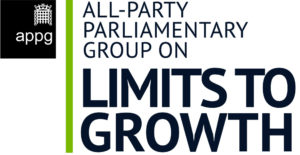The second in our series of briefing papers on building An Economy That Works explores inequality in the UK. It examines the evidence for rising inequality over the last fifty years, estimates the economic welfare lost to society from an unequal distribution of incomes and addresses the critical question of managing inequality in the context of declining growth rates. It finds that:
- when measured using the Gini coefficient, income inequality increased by 50% between the 1970s and the financial crisis;
- measured using household income ‘after housing costs’, the Gini coefficient rose even further (60%) during the same period;
- the share of income going to the top 1% of households almost tripled between 1977 and 2009;
- in the immediate aftermath of the financial crisis, income inequality fell slightly on all three measures but the trend has since stabilised or reversed and income inequality remains substantially higher than it was four decades ago;
- wealth inequality in the UK is even higher than income inequality, suggesting that further rises in income inequality are likely;
- property wealth inequality and financial wealth inequality have increased substantially since the financial crisis;
- the richest 10% of households now own 61% of all financial wealth, while the poorest have substantial financial debts (negative financial wealth).
These inequalities generate other significant welfare inequalities in society. People in the richest areas have 20 more years of healthy life than those in the most deprived areas. Meanwhile, the richest households have a carbon footprint up to 30 higher than the poorest.
Recognising that inequality imposes significant welfare costs on society, this paper uses the Atkinson Inequality Index to measure the welfare losses associated with today’s level of inequality. It finds that:
- the welfare lost through inequality rose from a low of 6% of the GDP to almost 12.5% of GDP in 2016;
- in money terms, this equates to a five-fold increase in lost welfare over the last half a century;
- the absolute value of the welfare lost through inequality in 2016/17 was around £240 billion—almost double the annual budget of the NHS.
Finally, the paper addresses the challenge of reducing inequality in the context of declining growth rates. It finds no evidence to support the claim that inequality inevitably rises as GDP growth declines. On the contrary, empirical data show that lower growth rates are as likely to be associated with declining inequality in recent UK history. Further analysis reveals that the impact of declining growth rates on inequality depends critically on market conditions. The paper briefly discusses the implications of these findings for changes in technology and the world of work.
The Policy Paper can be downloaded in pdf (2.1MB), or accessed in blog format on the CUSP website.
About the Series
An Economy That Works | Ten years after the financial crisis, sluggish growth, faltering labour productivity and persistent inequalities are creating huge uncertainties for the future of advanced economies such as the UK. Under these conditions, it is challenging to meet the investment needs associated with improving people’s health and wellbeing or to honour our obligations under the Paris Agreement on climate change. The implications for social and political instability are profound. Is a return to high levels of GDP growth the only way to meet these combined challenges? Is such a return even possible? A series of briefing papers from the All-Party Parliamentary Group on the Limits to Growth aims to explore these questions and to create the space for a vital conversation aimed at building An Economy That Works—for everyone.
For more briefings in the series, please see our publications page.

